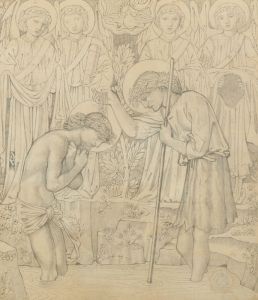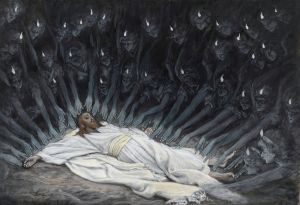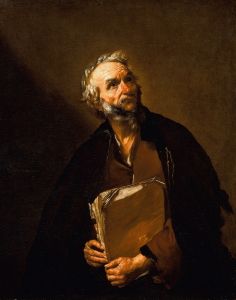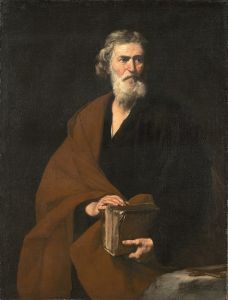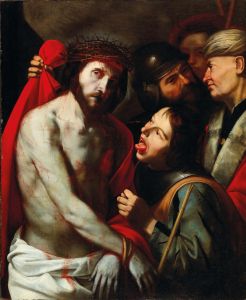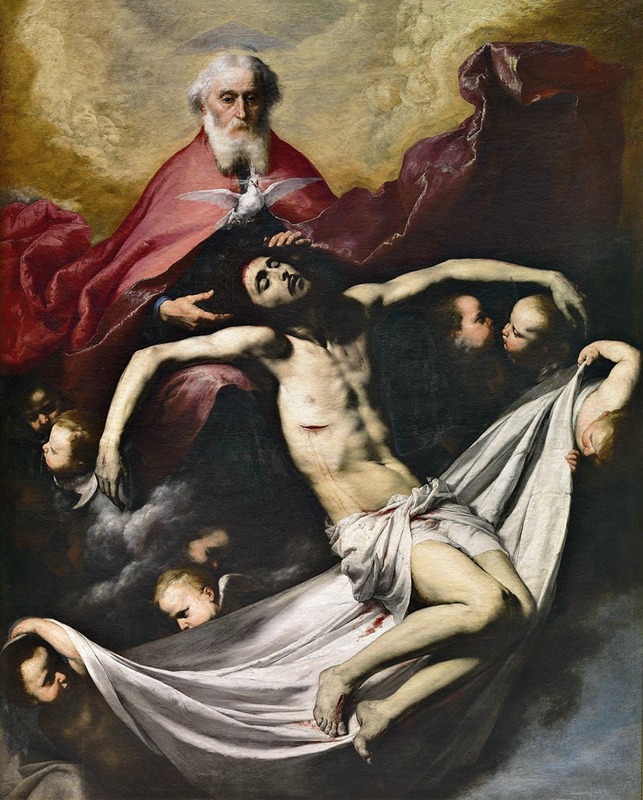
The Trinity
A hand-painted replica of Jusepe de Ribera’s masterpiece The Trinity, meticulously crafted by professional artists to capture the true essence of the original. Each piece is created with museum-quality canvas and rare mineral pigments, carefully painted by experienced artists with delicate brushstrokes and rich, layered colors to perfectly recreate the texture of the original artwork. Unlike machine-printed reproductions, this hand-painted version brings the painting to life, infused with the artist’s emotions and skill in every stroke. Whether for personal collection or home decoration, it instantly elevates the artistic atmosphere of any space.
Jusepe de Ribera, a prominent Spanish painter of the Baroque period, is known for his dramatic and realistic portrayals of religious and mythological subjects. One of his notable works is "The Trinity," a painting that exemplifies his mastery in the use of chiaroscuro and his ability to convey intense emotion through his art.
"The Trinity" by Jusepe de Ribera is a religious painting that depicts the Christian concept of the Holy Trinity, which consists of God the Father, God the Son (Jesus Christ), and the Holy Spirit. Ribera's interpretation of this theological theme is marked by his characteristic use of dramatic lighting and realistic detail, which were hallmarks of the Baroque style.
In the painting, Ribera presents the figures with a sense of solemnity and reverence. God the Father is typically portrayed as an older, wise figure, often with a long beard, symbolizing his eternal nature and wisdom. Jesus Christ, the Son, is usually depicted in a manner that emphasizes his humanity and divinity, often shown with the wounds of the crucifixion, highlighting his sacrifice for humanity. The Holy Spirit is commonly represented as a dove, a symbol derived from biblical accounts of Jesus' baptism.
Ribera's use of chiaroscuro, the contrast between light and dark, is evident in "The Trinity." This technique not only adds a dramatic effect to the painting but also serves to focus the viewer's attention on the central figures, enhancing the spiritual and emotional impact of the work. The interplay of light and shadow in Ribera's painting creates a sense of depth and volume, bringing the figures to life and imbuing them with a sense of presence and immediacy.
The painting reflects Ribera's deep understanding of human anatomy and his ability to render it with precision and realism. This skill is particularly evident in the depiction of Christ, where the musculature and form are rendered with meticulous attention to detail, conveying both the physical suffering and the divine nature of the figure.
Ribera's "The Trinity" is also notable for its emotional intensity. The expressions and gestures of the figures are crafted to evoke a sense of awe and contemplation in the viewer, inviting them to reflect on the mystery and majesty of the Holy Trinity. This emotional depth is a key characteristic of Ribera's work and contributes to the enduring impact of his paintings.
While specific details about the commission and provenance of "The Trinity" are not widely documented, Ribera's work was highly sought after during his lifetime, and he enjoyed the patronage of various religious and secular institutions. His paintings were admired for their technical excellence and their ability to convey complex theological themes in a manner that was both accessible and profound.
In summary, "The Trinity" by Jusepe de Ribera is a quintessential example of Baroque religious art, characterized by its dramatic use of light and shadow, realistic depiction of figures, and emotional depth. Ribera's ability to convey the spiritual significance of the Holy Trinity through his art has made this painting a significant work in the history of religious painting.





